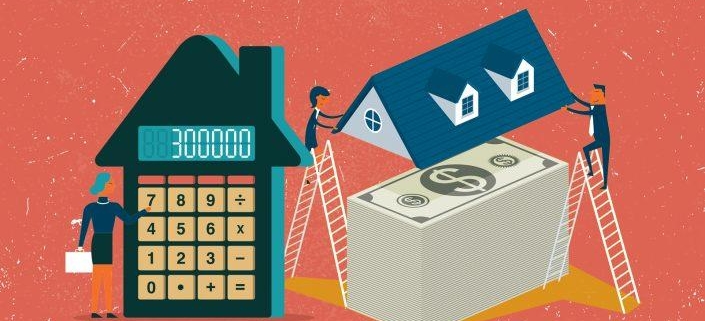It goes without saying that 2020 was an unprecedented year, and that the ripple effect on the housing market was swift and notable. Across the country, home buyers, sellers, and renters re-evaluated their housing priorities as they navigated the COVID-19 pandemic, and many local housing markets saw several months of record-breaking sales following a spring of record-breaking declines.
As we look forward to 2021, here are 5 housing market trends that everyone has their eye on going into the new year.
1. 18-Hour Cities Across Canada Will Continue to Drive Housing Demand
A common mantra you hear in real estate is: location is everything. One of the major implications of the pandemic was that it pushed home buyers to reconsider the scope of how location factored into their home purchase.
With remote-working options becoming commonplace across the country – and some companies making them permanent – a growing group of home buyers in dense, major cities like Toronto began prioritizing square footage and green space, where they may have previously put a premium on workplace proximity.
Not only did this result in skyrocketing demand for single-family homes in general, it also spurred many buyers to expand the boundaries of their home search far beyond city-limits. Many looked to 18-hour cities, often defined as “mid-size cities with attractive amenities, higher-than-average population growth, and a lower cost of living and cost of doing business than the biggest urban areas” to find better value.
For example, in Ottawa, home prices rose 19% year-over-year in November, and competition remained fierce among prospective buyers. “With huge buying demand being fueled by out-of-town buyers transitioning to the Ottawa market, we can expect prices to be driven up in the new year,” said Jonathan Amodeo, Broker in Ottawa.
Generally speaking, with increased flexibility to live and work anywhere, we can expect home buyers to continue to look further for affordable, spacious, single-family housing, which in turn is expected to drive demand within these cities and consequently put upward pressure on home prices as has been the trend in 2020.
2. ‘Typical’ Seasonal Real Estate Cycles Will Return And Buyers WIll Face Strong Competition
As most of the country came to a stand-still in March following stay-at-home orders, the economic and healthcare repercussions of the pandemic also brought the spring housing market to a halt; with record-breaking declines in prices and sales.
In response, the real estate sector as a whole pivoted to a virtual-first model, and as conditions improved, real estate boards and associations across the country implemented stringent safety protocols to prioritize the safety of the community at-large. As healthcare conditions eased over the summertime, pent-up demand, and limited inventory resulted in what many described as a “delayed spring market” effect, which in turn led to the record breaking sales experienced throughout the rest of the year.
Based on today’s expectations of an approved COVID-19 vaccine being rolled out in the coming weeks and months, plus an entire real estate industry that now has experience safely working within the framework of COVID-19 as we know it, buyers and sellers can expect for more traditional real estate cycles to reemerge in 2021 – with the market being at its busiest in the spring and the fall.
In fact, a recent report found that housing competition strongly favoured sellers in every single one of 25 major Canadian housing markets; with some of the most competitive conditions existing outside of Canada’s largest housing markets of Toronto and Vancouver – in Canada’s mid-sized cities. We can expect this trend to continue, as more Canadians who are seeking out more square footage and green space are willing to look further for housing.
3. Condo-Dense Markets Could See An Uptick in Rental Demand
Widespread closures across workplaces, universities, and the Canadian border to tourism and immigration alike resulted in rental vacancies rising to 2.8% in condo-dense markets like Toronto this past October (from just 0.7% the year prior), and at the highest levels for the first time in over a decade. Low demand spurred an increase in new listings and a consequent drop in rental prices, particularly across the city centre, and in areas popular for short-term rentals.
If the border opens up, and life begins to trend closer to what it was like pre-pandemic as a result of the vaccine, we can expect demand for rentals to grow again in city centres, particularly in the latter half of the year. For now, “if a renter is looking to get into a beautiful, trendy downtown condo at a prime location, now is a great time to lock it in,” said Andrew Kim, an agent in Toronto.
4. Mortgage Rates Will Remain Affordable
In response to the pandemic, the Bank of Canada kept the overnight lending rate at it’s “effective lower bound” of 0.25% for much of the year, with plans to maintain this rate until “economic slack” from the pandemic is absorbed, which is likely to be until at least 2023. Mortgage rates in turn, remain at an all-time low, with fixed mortgage rates hovering near the 1% mark.
Based on the Bank’s guidance, we can expect the overnight lending rate to remain steady for much of 2021 as the economy reacts to short term spikes in COVID-19 cases, and recovers over the long term as the vaccine is rolled out.
As far as mortgage rates go, there is potential for a slight increase in fixed rates as the bond market recovers in response to vaccine news and rollout. This in turn could impact the rate at which real estate prices rise toward the latter half of the year.
5. The Housing Market in the Prairies Could Get A Boost
The Prairies have been hard-hit by the coupling effect of the pandemic plus the ongoing impact of fluctuations in the energy market on jobs and consumer debt and spending. That being said, housing competition remains fierce in the region, with all major areas in the region experiencing strong seller’s market conditions this fall, e.g. Winnipeg (SNLR of 88%), Saskatoon (SNLR of 82%), Calgary (SNLR of 87%) and Edmonton (SNLR of 76%). Generally speaking, when the SNLR or sales-to-new-listings ratio is over 60%, competition conditions favour sellers over buyers because demand outpaces available supply.
With average home prices under the $500,000 mark across the Prairie region’s largest cities, if the world starts turning again and the economy and immigration into the region begins to recover in response to the vaccine, we can expect that the housing market in the Prairies may start to bounce back later in the year.









 Maziar Moini, Broker of Record - Home Leader Realty Inc.
300 Richmond St. W., #300, Toronto, ON M5V-1X2
Maziar Moini, Broker of Record - Home Leader Realty Inc.
300 Richmond St. W., #300, Toronto, ON M5V-1X2


